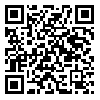Volume 31, Issue 3 (11-2018)
J Dent Med-tums 2018, 31(3): 175-184 |
Back to browse issues page
Download citation:
BibTeX | RIS | EndNote | Medlars | ProCite | Reference Manager | RefWorks
Send citation to:



BibTeX | RIS | EndNote | Medlars | ProCite | Reference Manager | RefWorks
Send citation to:
Sheikhi S, Shekarchizadeh H, Saied-Moallemi Z. The relationship between mothers’ oral health literacy and their children’s oral health status. J Dent Med-tums 2018; 31 (3) :175-184
URL: http://jdm.tums.ac.ir/article-1-5809-en.html
URL: http://jdm.tums.ac.ir/article-1-5809-en.html
1- Dentist, School of Dentistry, Islamic Azad University, Isfahan (Khorasgan) Branch, Isfahan, Iran
2- Assistant Professor, Department of Community Oral Health, School of Dentistry, Islamic Azad University, Isfahan (Khorasgan) Branch, Isfahan, Iran
3- Assistant Professor, Department of Community Oral Health, School of Dentistry, Isfahan University of Medical Sciences, Isfahan, Iran; Member of Dental Research Center, School of Dentistry, Isfahan University of Medical Sciences, Isfahan, Iran
2- Assistant Professor, Department of Community Oral Health, School of Dentistry, Islamic Azad University, Isfahan (Khorasgan) Branch, Isfahan, Iran
3- Assistant Professor, Department of Community Oral Health, School of Dentistry, Isfahan University of Medical Sciences, Isfahan, Iran; Member of Dental Research Center, School of Dentistry, Isfahan University of Medical Sciences, Isfahan, Iran
Abstract: (4439 Views)
Background and Aims: Caregivers’ oral health literacy (OHL) can be effective in increasing their children’s knowledge, and can improve their oral health-related behaviors. This study aimed to investigate the relationship between mothers’ OHL and children’s oral health status.
Materials and Methods: We conducted a cross-sectional study on 202 6-year child/mother dyads in Semirom, Iran, applying a cluster sampling method. Self-administered questionnaires (Oral Health Literacy-Adult Questionnaire) requested information about mothers’ OHL. Children’s oral health status (dmft and pufa) was recorded via clinical examination. Pearson correlation coefficient, spearman correlation coefficient, independent T-test, and a linear regression model were used for statistical analysis.
Results: Among 202 pre-school children, 99 were girls (49%). The mean OHL score of mothers was 63.2 (Max achievable score=100, SD=18.9). Higher score of OHL among mothers was associated with their children’s less missing teeth (mt) and more filled teeth (ft) (P<0.05). No significant the association existed between the mothers OHL and their children’s dt, dmft, and pufa. Childrens of younger mothers, more educated mothers, and those with better oral health behaviors in terms of daily flossing and tooth brushing, showed lower scores of dmft and pufa (P<0.05).
Conclusion: A significant association revealed between mothers’ OHL and the oral health status of their children. Thus, it is recommended to increase mothers’ OHL to improve their children’s oral health status.
Materials and Methods: We conducted a cross-sectional study on 202 6-year child/mother dyads in Semirom, Iran, applying a cluster sampling method. Self-administered questionnaires (Oral Health Literacy-Adult Questionnaire) requested information about mothers’ OHL. Children’s oral health status (dmft and pufa) was recorded via clinical examination. Pearson correlation coefficient, spearman correlation coefficient, independent T-test, and a linear regression model were used for statistical analysis.
Results: Among 202 pre-school children, 99 were girls (49%). The mean OHL score of mothers was 63.2 (Max achievable score=100, SD=18.9). Higher score of OHL among mothers was associated with their children’s less missing teeth (mt) and more filled teeth (ft) (P<0.05). No significant the association existed between the mothers OHL and their children’s dt, dmft, and pufa. Childrens of younger mothers, more educated mothers, and those with better oral health behaviors in terms of daily flossing and tooth brushing, showed lower scores of dmft and pufa (P<0.05).
Conclusion: A significant association revealed between mothers’ OHL and the oral health status of their children. Thus, it is recommended to increase mothers’ OHL to improve their children’s oral health status.
Type of Study: Research |
Subject:
general
Received: 2018/12/3 | Accepted: 2018/12/3 | Published: 2018/12/3
Received: 2018/12/3 | Accepted: 2018/12/3 | Published: 2018/12/3
Send email to the article author
| Rights and Permissions | |
 |
This work is licensed under a Creative Commons Attribution-NonCommercial 4.0 International License. |




